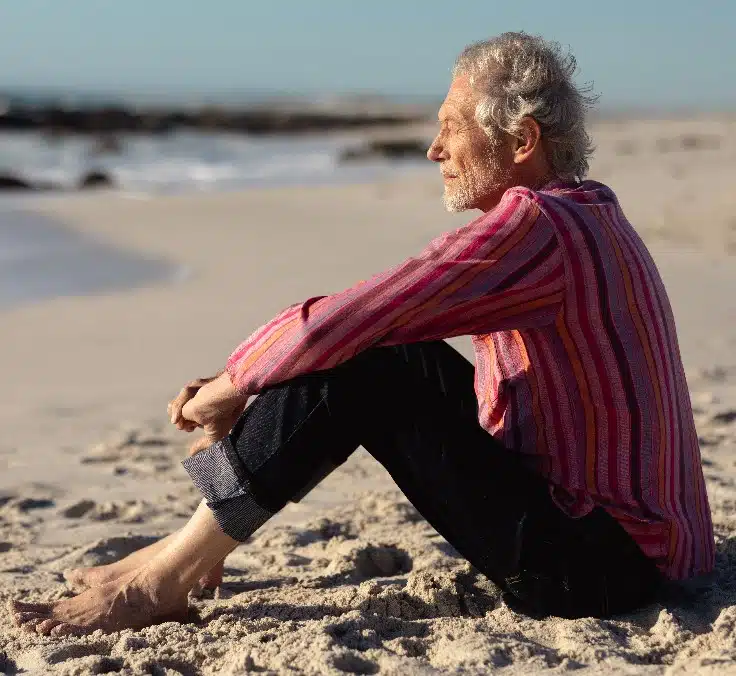SUSTAINABILITY| 14.12.2022
We’re getting older and older, but we’re also getting healthier: how worldwide aging affects the economy
The global population has been growing at a rapid rate in the last few decades. 8 billion people live on the planet Earth, a milestone reached in the last few weeks. If we consider that 70 years ago the global population was 2.5 billion, that the population grew by 1 billion in just 12 years, or that we are projected to reach a population of 9 billion in 15 years, we could be led to believe that the main challenge we are facing is exponential population growth, which could put at risk the planet’s capacity to provide resources to such an immense number of people.
However, many economists seem to be less preoccupied with this issue and much more with a different factor associated with the demographic changes we’re encountering: humanity’s progressive aging.
According to the United Nations’ latest estimates, by 2030 there will be more than 1 billion people over the age of 65. In 1950, the average age of the global population was 22 years old. Since then, this figure has gone up eight years, and by 2050 it will increase an additional six years, reaching the age of 36. In more developed regions like Europe or Japan, the average age will be over 50. Nowadays there are more than 150 million people over the age of 80, double the number from 20 years ago.
This all has serious consequences for the global economy. The increasing number of elderly people means that there are less people of working age that can contribute to the economy. This could lead to less government revenue, less employees for the labor market, and more pressure on pension and social security systems. An aging population also generates greater demand for health and care-related services in the long term.
“There’s no doubt in mind that aging, together with climate change and the digital revolution, is one of the three big challenges humanity is facing this century,” explained Juan Fernández Palacios, the manager of Fundación MAPFRE’s Ageingnomics Research Center.
“This is a pressing issue in the short term due to the type of population pyramid we have, with the baby boom generation about to enter retirement age,” added Ricardo González, Director of Analysis, Sectorial Research, and Regulation at MAPFRE Economics. “The next two decades are going to be complicated. Healthcare costs go up as we age. By our calculations, people over the age of 65 make up 60% of total healthcare spending. We’ll also see a reduction in the workforce, which will push salaries up, and if this doesn’t go hand in hand with improvements in productivity, inflationary pressures may develop.”
Countries like Spain “are even more vulnerable in this respect, because our population has one of the best life expectancies on the planet, and at the same time our economy is dominated by service sectors, which rely heavily on the workforce.”
So what can be done about aging? Companies and countries have been trying out many different solutions over the last few years. Many companies have opted to offshore a good deal of their economic production to younger countries, but this also impacts the workforce of countries with older populations. Another normal response is to increase migration flows, which seem like they will continue to grow significantly in the next few decades, but this is conditioned by social and political forces. “Though it’s true that immigration can lead to culture shock, people may be against immigration because they don’t realize the problem we’re dealing with,” pointed out Juan Fernández Palacios.
Embracing technological innovations is another option, of course, ones that increase productivity while relying less on the workforce. And from a financial point of view, public policies that promote private savings are also essential, so that people “can start a savings fund from a young age that can help complement public pensions,” explained Ricardo González.
But at the end of the day, none of these options will provide a good enough solution on their own, as other critical variables are needed, like having a larger proportion of elderly people in the workforce.
And after all, the aging dilemma is the result of one of humankind’s greatest achievements: extending our life expectancy. People are living longer due to improved nutrition and advances in medicine, hygiene, healthcare, education, and economic progress.
The senior consumer barometer created by Ageingnomics, for example, “paints a picture of these people that has nothing to do with the stereotypical beret-wearing and cane-wielding grandpa. They’re affluent people that support those closest to them. 80% of them travel relatively frequently each year, and 11 million people over 55 use the internet on a daily basis. There’s enormous potential there that society isn’t tapping into,” argued Juan Fernández Palacios.
“Yes, there are more and more of us, and we’re getting older and older. But we’re also healthier. People between the ages of 65 and 75 today are nothing like their counterparts from 30 or 40 years ago. There’s a growing group of well-trained and healthy people that are capable of continuing to contribute to society. And this contribution could help to resolve some of the threats we’re facing.”
RELATED ARTICLES:




